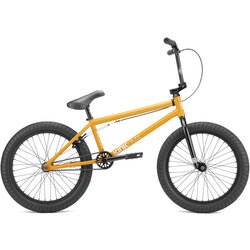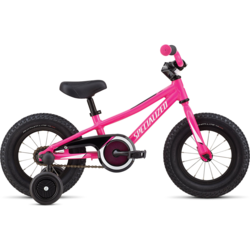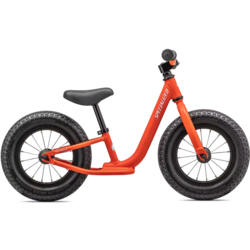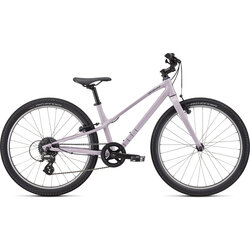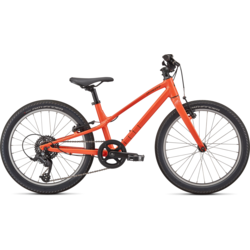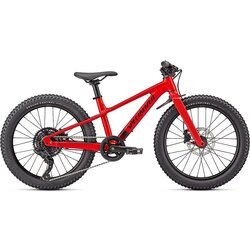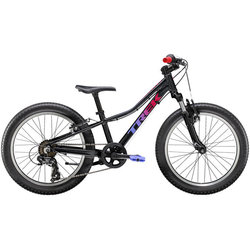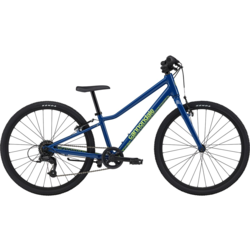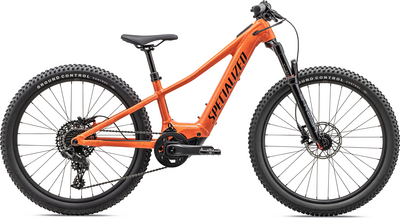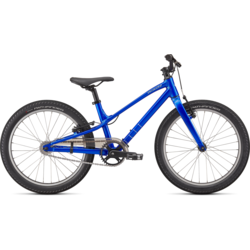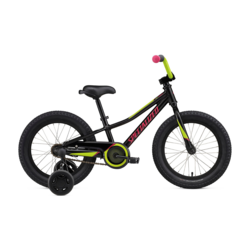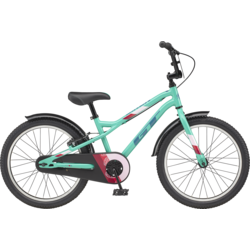Kids’ bikes – All you need to know!
One of my fondest memories from childhood was running down the stairs Christmas morning, ecstatic about what surprises awaited us under our tree. On one particularly special Christmas morning, the silhouette of a bicycle (obscured by our tree and wrapped as well as one can wrap a bicycle) evoked an unparalleled sense of joy.
If you would like to recreate this magical feeling for your child or loved one, in this author's view, there is still no better gift than a bicycle.
For some, purchasing a bicycle for a child might feel straightforward; for others, it can feel a touch overwhelming. Am I purchasing the right size or style; will they be able to grow into it; is it safe; is it good quality; what types of brakes should kids' bikes have; should we put training wheels on it? There is a good bit of information to be aware of before making a purchase on a child's bicycle. It can therefore be intimidating. In this article, I'm going to help you navigate all those questions and more.
How are kids' bikes sized? First and foremost, the size of a child's bike is the single most important element to get right. There are other important factors, such as hand brakes vs pedal brakes; however, proper sizing is vital. Kids’ bikes are sized much differently than adult bikes. Where adult bikes are usually sized based on the frame, kids' bikes are sized based on the wheels. The smallest kids' bikes usually start at a 10-inch wheel and work their way up to 24-inch wheels. After that, anything larger is technically a small adult bike.
When should you buy your first kids’ bike? I’ve been teaching kids to ride bikes for years–including my two daughters. In my experience, the earlier one’s child gets on a bike, the easier it is for them to learn. Additionally, data indicates that the earlier people start riding bicycles, the more likely they are to continue to ride throughout their life. If you're a rider yourself, what better way to spend time with a youngster than side by side on bicycles? In short, the earlier, the better!
Balance bikes are the new norm. Years ago, most of us learned to ride bikes with training wheels. A notable flaw with this approach is that training wheels are a crutch. While they do work, they don’t truly enforce the balancing component of bicycle riding. This is why I recommend a child's first bike be a balance bike.
What is a balance bike? A balance bike is a very small bicycle, built for young children, that doesn’t include any pedals. This allows a child to “scoot” along, and catch themselves if they are going to tip over. This promotes learning to balance the bike through steering and leaning into turns, which simply isn’t possible with training wheels. Balance bikes predominantly come in two sizes: 10-inch wheels and 12-inch wheels, and will work for a toddler up to about 5 years old. If your child is beyond the balance bike size but has still not learned to ride, taking the pedals off of their well-fitting existing bike is a great hack to teach them to balance on two wheels. Once they master balance, put the pedals back on, and away they’ll go!
Now that your child has mastered the balance bike, what’s next? It’s time to throw on some pedals. Although some balance bikes can be retrofitted with pedals, most likely your child is ready to size up into a 16 or 20-inch bike. Because kids grow so fast, it is tempting to think about trying to buy a bike your child can grow into. Although sometimes this approach is ok, typically, at this stage of the game, it is not advised. A properly fitted bike will inspire confidence in the child which goes a long way toward mastering the two-wheeler. Building trust is more difficult on a bike too large for a child, as its size can be intimidating. It only takes one bad experience, like a painful fall, to turn a kid off of cycling altogether.

So how do we really know if the bike fits? If your child can place both feet on the ground when stopped, that is usually a sign of a good fit. Some kids may just be able to get their tippy toes on the ground and if they’re a bit more advanced, that will do just fine. Ideally, though, what we are looking for is when the child comes to a stop on the bike, that they are in complete control.
Lastly, while seated, your child has to be able to reach the handlebars of the bike comfortably. If they have to stretch to get to the handlebars, the bike may be too big. There’s often a little wiggle room to make the bike fit perfectly by moving the handlebar to better accommodate each rider.
Almost all kids’ bikes with wheel sizes 20 inches and below will come with coaster brakes, more commonly referred to as pedal brakes. The idea behind these brakes is that it is easier, or more instinctual, for a child to stop a bike by pedaling backward. As bikes become larger, they're typically fitted with a handbrake; while some have both coaster and hand brakes. Deciding what to get really depends on the child and how they are progressing with their cycling.
If they are just cruising the neighborhood, coaster brakes and one gear seem to be fine. Once they show an interest in traveling more than a few miles, having multiple gears really opens up the possibilities for hills and further distances. Once they graduate to a geared bike, the only option for brakes becomes hand brakes. All brakes are not created equal and this is why it is important to buy the highest quality bike you can. Yes, you can spend less at a department store, but usually, the standout difference between a bike shop bike and a department store bicycle are the brakes.
Buying a quality bike from a local bicycle shop will not only give your child the best possible cycling experience but may also be the determining factor in whether they become lifelong cyclists. Cycling often has a profoundly positive impact on one's long-term mental and physical health. It's a form of exercise that can be maintained throughout one’s lifespan. Societies with a strong bike culture are healthier by virtually every metric. Let's continue to create that culture here in the Berkshires.

